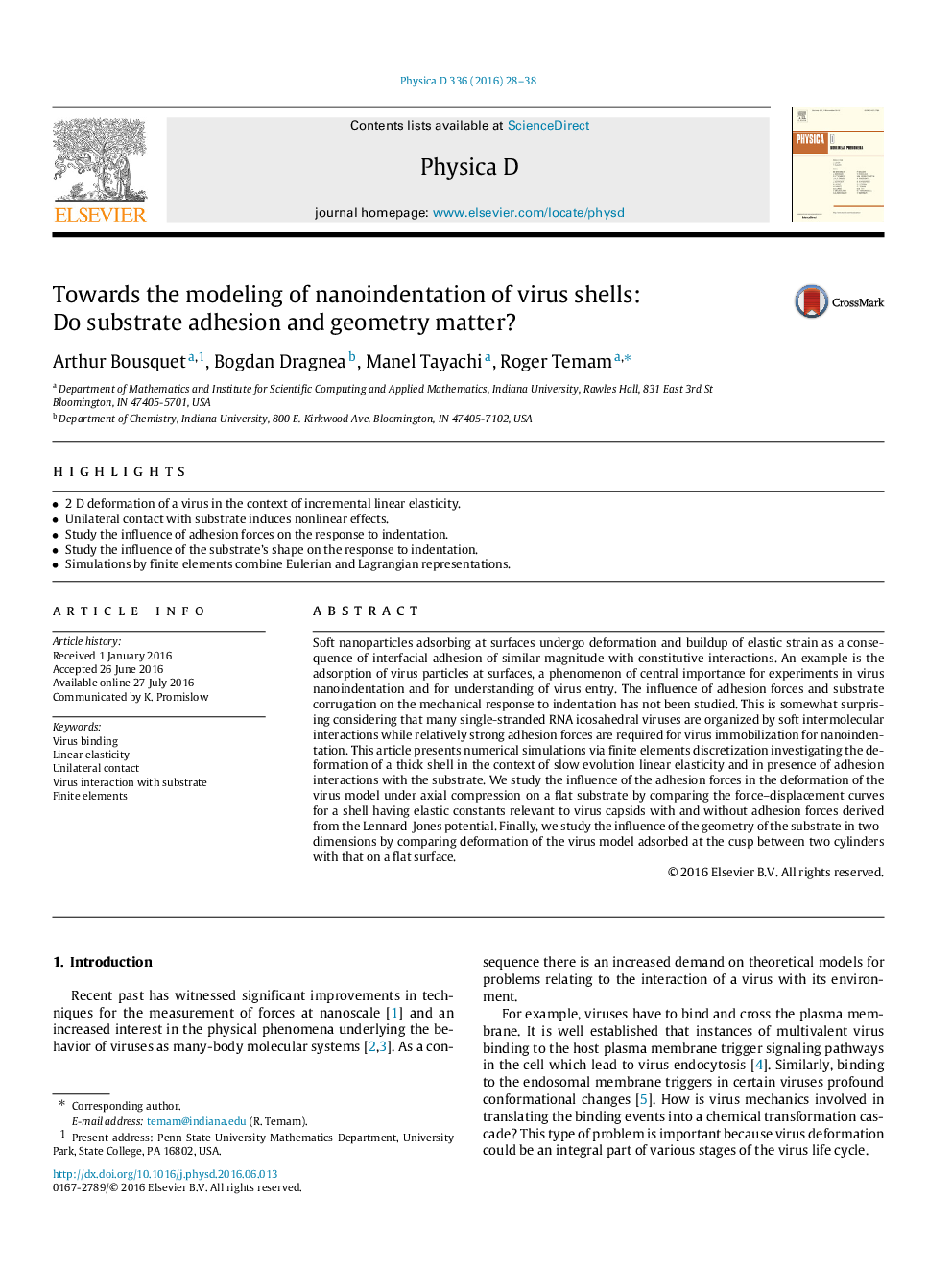| Article ID | Journal | Published Year | Pages | File Type |
|---|---|---|---|---|
| 5500241 | Physica D: Nonlinear Phenomena | 2016 | 11 Pages |
Abstract
Soft nanoparticles adsorbing at surfaces undergo deformation and buildup of elastic strain as a consequence of interfacial adhesion of similar magnitude with constitutive interactions. An example is the adsorption of virus particles at surfaces, a phenomenon of central importance for experiments in virus nanoindentation and for understanding of virus entry. The influence of adhesion forces and substrate corrugation on the mechanical response to indentation has not been studied. This is somewhat surprising considering that many single-stranded RNA icosahedral viruses are organized by soft intermolecular interactions while relatively strong adhesion forces are required for virus immobilization for nanoindentation. This article presents numerical simulations via finite elements discretization investigating the deformation of a thick shell in the context of slow evolution linear elasticity and in presence of adhesion interactions with the substrate. We study the influence of the adhesion forces in the deformation of the virus model under axial compression on a flat substrate by comparing the force-displacement curves for a shell having elastic constants relevant to virus capsids with and without adhesion forces derived from the Lennard-Jones potential. Finally, we study the influence of the geometry of the substrate in two-dimensions by comparing deformation of the virus model adsorbed at the cusp between two cylinders with that on a flat surface.
Related Topics
Physical Sciences and Engineering
Mathematics
Applied Mathematics
Authors
Arthur Bousquet, Bogdan Dragnea, Manel Tayachi, Roger Temam,
